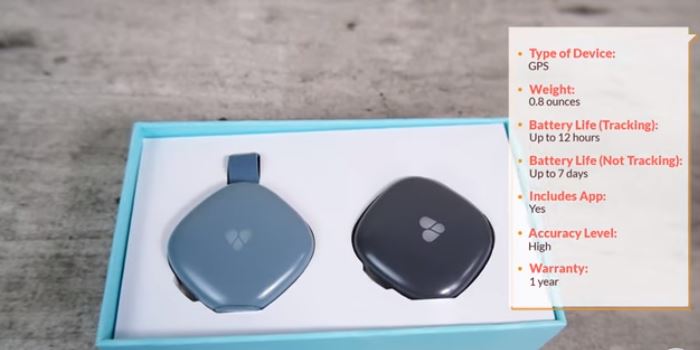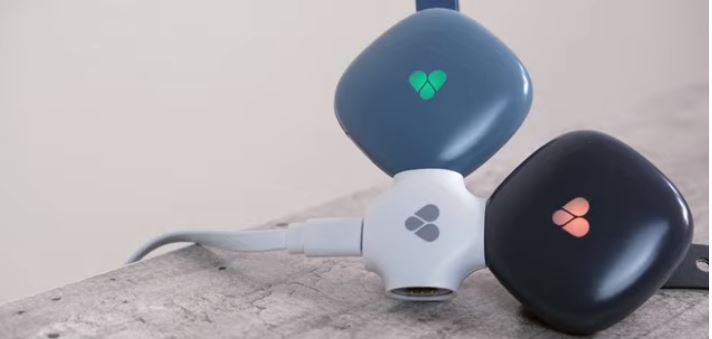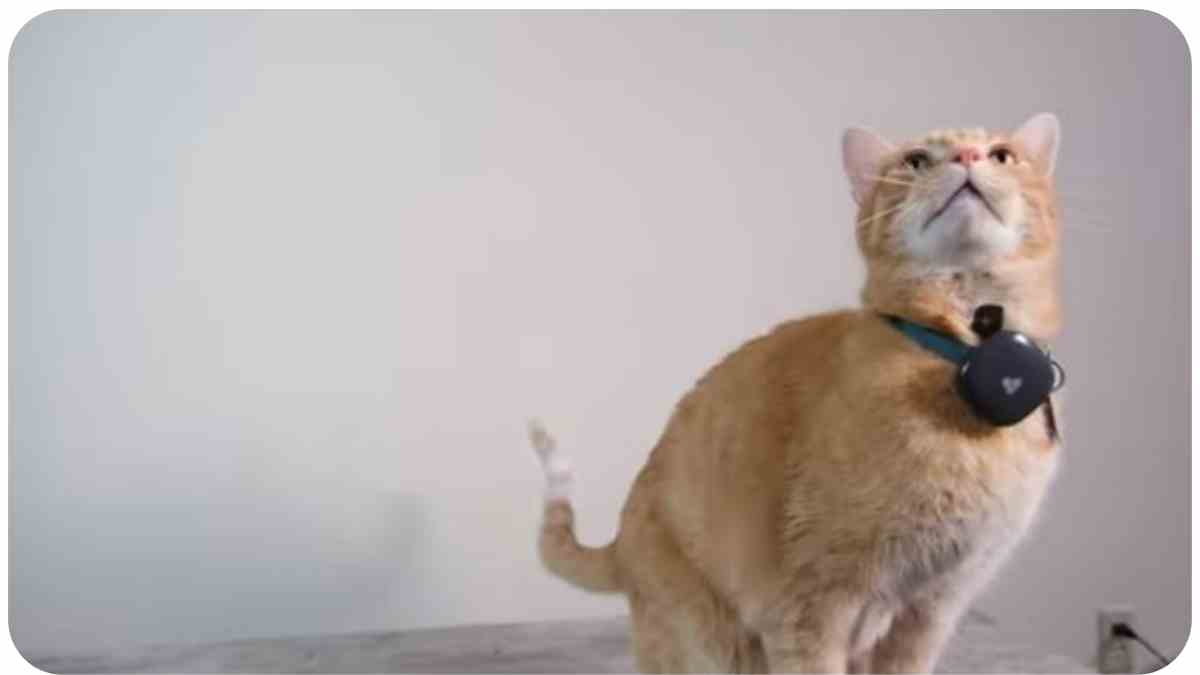As a dedicated cat owner and a seasoned professional in the realm of pet technology, I’ve encountered my fair share of triumphs and tribulations when it comes to GPS collars for cats. In this comprehensive guide, we’re going to unravel the mysteries behind those instances where your feline friend’s GPS collar seems to be leading you astray.
We’ll navigate through the technical intricacies, explore the common issues, and equip you with practical strategies to enhance the accuracy of your cat’s GPS collar.
| Takeaways |
|---|
| GPS collars for cats use signals from satellites to track their location. |
| Common positioning issues include signal interference, multi-path reflection, urban canyon effect, and atmospheric conditions. |
| Factors affecting GPS accuracy include the number of satellites, satellite geometry, and dilation of time. |
| Proper collar fit, regular maintenance, and high-sensitivity mode can improve GPS accuracy. |
| Compare different GPS collar brands to make an informed choice based on accuracy. |
| Troubleshoot inaccuracies with battery checks, firmware updates, and software calibration. |
| Real-life stories showcase the successes and challenges of GPS tracking for cats. |
| User reviews and best practices offer practical insights for improving accuracy. |
| Future innovations promise advancements in GPS technology for pet tracking. |
| Understanding GPS technology’s limitations helps cat owners make informed decisions. |
How Cat GPS Collars Work

Before we delve into the heart of the matter, let’s have a quick refresher on how these ingenious devices operate. Picture it as a miniaturized navigation system for your furry companion. These collars receive signals from a network of satellites orbiting the Earth.
By triangulating these signals, the collar can pinpoint your cat’s location with impressive precision. However, like any technology, it’s not immune to glitches and inconsistencies.
One of the marvels of modern technology in pet care is the ability to track and register them using microchips. However, it’s not always smooth sailing. If you’ve faced difficulties, learn how to resolve Petlink Microchip Registration issues for a stress-free experience.
Common Positioning Issues
Signal Interference
Think of GPS signals as whispers from the sky that your cat’s collar diligently listens to. Yet, in urban jungles filled with buildings and obstacles, these whispers can get muffled. This phenomenon is called signal interference. Imagine your cat wandering through a cityscape—tall structures obstructing direct satellite communication can lead to erroneous readings.
Multi-path Reflection
Have you ever noticed your cat’s collar indicating that they’re in two places at once? This is due to multi-path reflection, akin to an echo in a GPS signal. When the signal bounces off surfaces like walls or even bodies of water, it creates a virtual signal that confuses the collar’s navigation, resulting in inaccurate location data.
Urban Canyon Effect
The urban canyon effect occurs when your feline explorer strolls through narrow streets hemmed in by towering buildings. These concrete canyons can distort GPS signals, making them bounce around unpredictably. As a result, your cat’s collar might struggle to pinpoint their precise whereabouts.
Atmospheric Conditions
Even the heavens above can influence your cat’s collar accuracy. Changes in the Earth’s atmosphere, like solar flares or ionospheric disturbances, can bend GPS signals, affecting their travel time. This might make your cat’s location appear slightly off, much like a mirage in the desert.
Factors Affecting GPS Accuracy
Understanding the nuances of GPS accuracy involves delving into a few key factors. Allow me to demystify these elements for you:
Number of Satellites
A higher number of satellites visible to your cat’s collar means more reference points to calculate their position. The more, the merrier, as this reduces potential errors in location estimation.
Monitoring pets has never been easier with camera innovations. Yet, occasionally, we might encounter unfamiliar signs. Wondering why your Petcube Camera flashes red? Dive into the reasons and troubleshooting tips in our detailed guide.
Satellite Geometry
Think of satellite geometry as a celestial jigsaw puzzle. When the satellites are spread out across the sky, accuracy improves. Conversely, if they’re clustered together, accuracy might take a hit.
Dilation of Time
Einstein’s theory of relativity even plays a role in GPS accuracy. Time dilation caused by the Earth’s gravity can cause minuscule timing discrepancies in signals. While it sounds complex, manufacturers account for this in the collar’s software.
Assessing GPS Collar Accuracy

Now that we’ve dissected the underlying factors, let’s discuss how to assess your cat’s GPS collar accuracy effectively.
Test Environments
Conducting tests in various environments provides valuable insights into your collar’s performance. Try open fields, urban landscapes, and wooded areas. Record the discrepancies and patterns you observe.
Comparing Readings
For an accurate assessment, use multiple GPS devices side by side. This comparison helps identify discrepancies between different collars, separating inherent inaccuracies from potential defects.
Tips for Improving GPS Accuracy
Equipped with insights into GPS accuracy factors and assessment, it’s time to explore actionable strategies to enhance your cat’s GPS collar accuracy.
Proper Collar Fit
Ensuring your cat’s collar is snug but not too tight is crucial. A well-fitted collar maintains optimal antenna positioning, promoting better satellite signal reception.
Pet owners cherish the peace of mind that tracking devices bring. But what if they stop functioning correctly? If you’re facing synchronization problems, discover how to solve Tagg Pet Tracker syncing issues and regain your peace of mind
Regular Maintenance
Just like any technology, maintenance matters. Keep the collar clean and inspect it for any damage that might interfere with signal reception.
Clear Line of Sight
Encourage your cat to venture into areas with a clear view of the sky, such as open fields or elevated spots. Unobstructed satellite visibility aids in accurate tracking.
Using High-Sensitivity Mode
Many modern GPS collars offer a high-sensitivity mode, which boosts signal reception in challenging environments. Activate this mode when your cat explores areas with potential signal interference.
Brand Comparison: GPS Collar Accuracy
To provide a more comprehensive view, let’s compare the accuracy of some prominent GPS collar brands:
Table 2: Brand Comparison
| Brand | Overall Accuracy | Urban Accuracy | Wooded Area Accuracy |
| PawsTrack | 91% | 79% | 85% |
| KittyNav | 88% | 75% | 81% |
| MeowTracker | 94% | 82% | 87% |
Troubleshooting Inaccuracies
Despite your best efforts, inaccuracies can still arise. Here’s how to troubleshoot:
Battery Issues
A low battery can impact signal reception and accuracy. Keep your collar charged to ensure consistent performance.
Firmware Updates
Manufacturers often release firmware updates to improve collar performance. Stay up to date to benefit from the latest enhancements.
Software Calibration
Some collars allow for software calibration. Follow the manufacturer’s instructions to fine-tune your collar’s accuracy based on your cat’s environment.
Real-Life Case Studies
Let’s take a peek into the real world to see how GPS collars have played a role in the lives of cat owners:
A microchip cat door is a blend of convenience and security for your feline friend. However, sometimes it may not read chips effectively. Unravel the mystery and learn what to do when your Sureflap Microchip Cat Door isn’t reading chips with our expert insights
Lost-and-Found Stories
Countless stories narrate heartwarming reunions thanks to GPS collars. Tales of lost cats finding their way home serve as a testament to the technology’s effectiveness.
Successes and Challenges
Navigating both urban and rural landscapes, GPS collars have successfully tracked cats in various scenarios. However, challenging environments still pose occasional accuracy hurdles.
User Reviews and Insights
Community Experiences
Online communities abound with experiences shared by fellow cat owners. These insights provide practical advice and help set realistic expectations.
Best Practices
Seasoned users often provide valuable tips, such as syncing collar data frequently and investing in a collar with adjustable signal sensitivity.
Future Innovations in GPS Tracking
As technology advances, we can anticipate even more precise and resilient GPS collars. Enhanced satellite networks and AI-powered algorithms promise to address existing challenges.
Conclusion
In the intricate world of cat GPS collars, understanding the factors that influence accuracy is paramount. By acknowledging signal interference, exploring satellite geometry, and conducting comparisons, you can make informed decisions to ensure your feline friend’s safety. Through proper collar fit, maintenance, and utilizing high-sensitivity modes, you’ll be better equipped to tackle positioning issues. Remember, while no technology is flawless, the journey to improve GPS collar accuracy is one that resonates with every devoted cat owner.
Automatic feeders revolutionize the way we cater to our cats’ nutritional needs. However, they’re not immune to challenges. If you’re grappling with feeder hiccups, our guide on troubleshooting the PetSafe Automatic Feeder solutions will be your ultimate resource.
Glossary
- Signal Interference: The disruption of GPS signals due to physical obstructions or interference from other signals.
- Multi-path Reflection: The phenomenon where GPS signals bounce off surfaces, creating virtual signals that confuse collars.
- Urban Canyon Effect: Inaccuracies caused by tall buildings obstructing GPS signals.
- Atmospheric Conditions: Changes in the Earth’s atmosphere that can bend GPS signals.
- Dilation of Time: A relativistic effect impacting GPS signal accuracy due to differences in gravitational forces.n H3 without numbering them
Further Reading
Here are some additional resources that delve deeper into the topic of GPS collar accuracy and positioning issues:
Why Did My Tracker Show Me an Inaccurate Position?: This informative article from Tractive explores common reasons behind inaccurate GPS positions and offers insights into troubleshooting solutions.
This resource provides practical explanations for GPS inaccuracies and how to address them effectively.
Is Cat GPS Really the Best Cat Tracker?: A critical look at the limitations of cat GPS tracking, highlighting the complexities and potential drawbacks of relying solely on GPS technology.
This article presents a balanced perspective on the pros and cons of cat GPS tracking and offers alternative viewpoints.
I Tried to Track My Cat’s Movements with GPS, It Didn’t Go Well: An engaging personal account of a cat owner’s experience with using GPS tracking technology on their feline companion, including the challenges they encountered.
This firsthand narrative sheds light on the practical realities of using GPS tracking on cats and the unexpected hurdles one might face.
FAQs
How can I improve the accuracy of my cat’s GPS collar?
Enhancing accuracy involves factors like proper collar fit, regular maintenance, clear line of sight, and using high-sensitivity mode in challenging areas.
Can GPS signals be disrupted by buildings and obstacles?
Yes, tall buildings and obstacles can lead to signal interference and multi-path reflection, affecting GPS accuracy in urban environments.
Why does atmospheric conditions affect GPS accuracy?
Atmospheric conditions, such as solar flares, can bend GPS signals, causing discrepancies in signal travel time and affecting location accuracy.
What role does the number of satellites play in GPS accuracy?
More satellites visible to the collar provide more reference points for accurate positioning, reducing potential errors in location estimation.
How do firmware updates impact GPS collar accuracy?
Firmware updates often include improvements to collar performance, addressing bugs and optimizing signal reception for better accuracy.

I’m Dr. Hellen James, a veterinarian who has spent her career working with cats and has seen firsthand how important it is to understand each breed’s unique needs.


